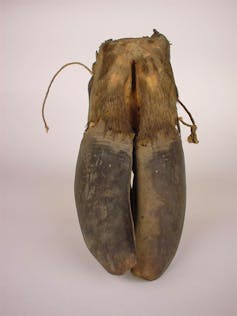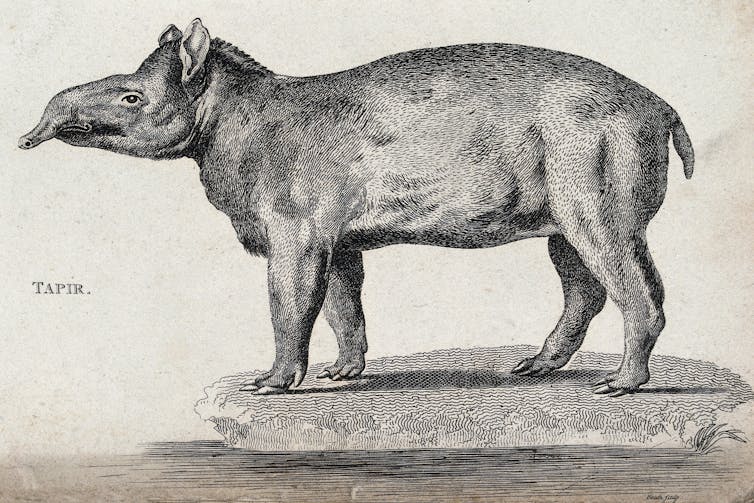https://theconversation.com/from-jaguar-teeth-to-the-nail-of-the-great-beast-the-evolution-of-animal-medicines-107821
In February 2018, the Bolivian authorities captured two Chinese citizensin a poultry store in the city of Santa Cruz de la Sierra. They were apprehended in possession of 185 jaguar fangs, three feline skins, a 22-caliber pistol, a large sum of money, and body parts of many other animal species, including rattlesnakes, marsh deer, giant armadillos and jaguars. All were to be shipped to Chinese medical markets, where, according to experts in the animal illegal trade, the jaguar – a wild feline native to the Americas – is in more and more demand as a replacement for Chinese medicines derived from their “original” source – the Asian tiger.
This story highlights something not often discussed when it comes to the illegal wildlife trade for traditional medicines – that traditions are a human product, a result of entangled exchanges, often driven by commerce. Thanks to these processes, new species that are strangers to Chinese lands can become staples of the black medical market as substitutes to the (dwindling) traditional ones.
The jaguar is the largest native feline species of the New World, the third largest in the world and the only extant member of the genus Pantheranative to the Americas. Jaguars have already been long exploited for the fur industry, both at home and abroad. Alexander von Humboldt recorded that late in the 18th century, 4,000 jaguars were killed in the Spanish colonies annually and 2,000 were exported every year from Buenos Aires for use in the fur industry. But the historical sources do not mention any medical use of jaguar body parts.
Today, the species is considered “near threatened” and the trade in jaguars and their body parts is prohibited. Numbers are, however, declining: due to the emergence of a new black market for jaguar parts located on the other side of the world.
The great beast
This story of substitution and surrogates in the wildlife trade has a long history, especially when it comes to medicines derived from animal parts. As the Spanish military engineer Félix de Azara put it early in the 19th century: “Humans make remote beasts bind together.”

One such story that I’m currently researching revolves around the hooves of a species of large mammals. Early in the 1580s, the Milanese physician Apollonius Menabenus, former doctor of John III Vasa of Sweden, published a treatise discussing the virtues of the elk. This “great beast”, he wrote, was a creature that suffered from epilepsy and cured itself by putting the hoof of the left hind foot into its ear.
This peculiar pairing of affliction and cure had been seen before. A similar habit had long ago been noted in the ass by Roman scholars Dioscorides and Pliny. So the fact that Swedish naturalist Olaus Magnus, one of the most important early modern authorities on this animal, described the elk as a wild ass or onager in his History of the Northern Peoples (1555) can probably explain this new belief about the elk.
This could have stimulated Menabenus to write about the elk, an animal that in Sweden had been placed under the king`s protection. Aware of the potential commercial interest in Swedish exotic and curious objects, Menabenus promoted the medical use of the so-called “nail of the great beast”.
In the Americas
The currency of this strange tale by no means ended in Northern Europe. Late in the 18th century, the Welsh traveller, naturalist and antiquarian, Thomas Pennant, devoted a long description in his Arctic Zoology to the elk and the moose, the largest extant species in the deer family. According to Pennant, North American natives used the elk hoof in the same way it was used in Old World pharmacopeias:
The opinion of this animal’s being subject to the epilepsy seems to have been universal, as well as the cure it finds by scratching its ear with the hind hoof till it draws blood. That hoof has been used on Indian medicine for the falling-sickness; they apply it to the heart of the afflicted, make him hold it in his left hand, and rub his ear with it.
On the other side of the Americas and almost at the same time, Félix de Azara attributed the same property to the hooves of the Paraguayan tapir, a large herbivorous mammal, with a short, prehensile snout, that inhabits forest regions of South America. The animal was called “gran bestia” by the Spaniards and “anta” by the Portuguese. Since then, every time the tapir was described, in no matter which region of South America, the medical virtues of the its hoof reappeared over and over again as a local, native tradition.

Animal medicines
Referring either to the moose, elks or tapirs, all the way across the Americas and Europe, the sources exhibit a recurring belief that the hooves of large mammals, often simply called “the great beast”, were valuable in treatment of human epilepsy. Pennant, the Welsh naturalist, considered this association to be a kind of universal belief or a remarkable parallel to the Old World. He saw the pattern as evidence of an underlying ancestral unity of humans that causes them to react similarly to new and evolving situations.
But the contemporary trade in jaguar’s fangs shows us that these reactions could have more mundane causes. The nail of the “great beast” and the jaguar´s fang have something in common. Both illustrate how the commerce in animal products transfers names and virtues across species, contributing to a human association between species that come from alien worlds. It was commerce, not universal truth, that lead to the search for surrogates that could act as the “great beast” on both sides of the Atlantic, sealing the destiny of the local animal species selected to be the source of the curing hoof.
Jaguar fangs, for now, are not used in Bolivia as medicine; their sale appears strongly linked to the community of Chinese workers who have arrived in the country in the last decade. But the story of the nail of the great beast makes it plausible that in the near future it will be considered part of the country’s traditions. We’ll have to stay tuned.